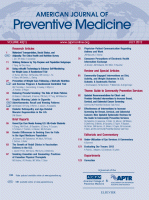Abstract:
BACKGROUND: The Family Smoking Prevention and Control Act gave the U.S. Food and Drug Administration (FDA) legal authority to mandate graphic warning labels on cigarette advertising and packaging. The FDA requires that these graphic warning labels be embedded into cigarette advertising and packaging by September 2012.
PURPOSE: The aim of this study was to examine differences in recall and viewing patterns of text-only versus graphic cigarette warning labels and the association between viewing patterns and recall.
METHODS: Participants (current daily smokers; N=200) were randomized to view a cigarette advertisement with either text-only or graphic warning labels. Viewing patterns were measured using eye-tracking, and recall was later assessed. Sessions were conducted between November 2008 and November 2009. Data analysis was conducted between March 2011 and July 2011.
RESULTS: There was a significant difference in percentage correct recall of the warning label between those in the text-only versus graphic warning label condition, 50% vs 83% (χ(2)=23.74, p=0.0001). Time to first viewing of the graphic warning label text and dwell time duration (i.e., time spent looking) on the graphic image were significantly associated with correct recall. Warning labels that drew attention more quickly and resulted in longer dwell times were associated with better recall.
CONCLUSIONS: Graphic warning labels improve smokers’ recall of warning and health risks; these labels do so by drawing and holding attention.
Authors
- Joseph N. Cappella
- Christopher Jepson
- Daniel Romer
- Andrew A. Strasser
- Kathy Z. Tang


